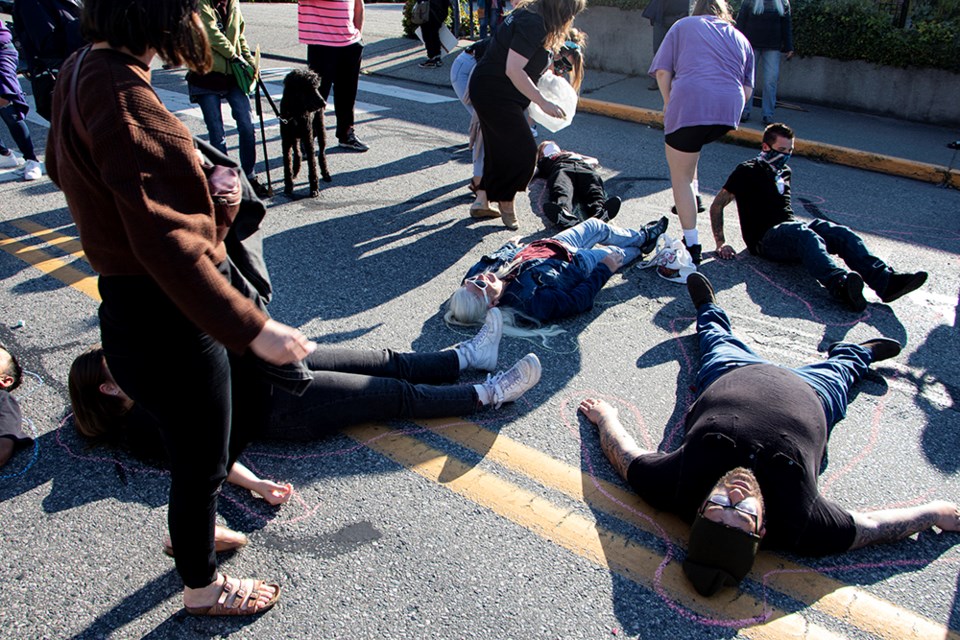With the recent release of the BC coroner’s report on loss of life due to drug toxicity, work is being done in the qathet region to address the overdose crisis.
Lisa Lapointe, BC’s chief coroner, announced the illicit drug supply had claimed more than 200 lives in the province in October, and 1,782 in the first 10 months of 2021.
Kathryn Colby, coordinator of the community action team (CAT), an organization of more than 70 individuals and representatives from various qathet region community organizations working to deal with the opioid crisis, said statistics are worsening.
“Anecdotally, our substance using folks have let us know that they think it’s the deadliest month in history in the qathet region as well,” said Colby. “We recently opened up an injectable opioid therapy treatment clinic, staffed with nurses for people to have better alternatives for substance use medicine. We are working with local prescribers to get street drug users onto a pharmaceutical alternative in order to save lives.
“We are really proud of our clinic. We are currently offering 12 people alternatives to illicit supply. We are currently in a two-year pilot and we are hoping to scale up everything that works to keep people alive. We are the first rural clinic of its kind in Canada.”
Colby said the community’s overdose prevention site has seen almost triple the number of people in the last few months coming to make use of it. She said that includes people with full-time jobs who are finally feeling safe enough to use, get information and connection at the supervised consumption site.
“People are really understanding what is happening, which, as drug supply becomes more toxic everywhere, becomes even more toxic in rural areas,” said Colby.
In order to assist those using drugs, the community action team has received a grant to purchase a spectrometer. Colby said they are in the process of purchasing one for the community.
“Some of the things we have found in our local drug supply are medications such as a hog-dewormer, which has created a tonne of really unfortunate side effects,” said Colby. “People are getting large abscesses and are having to be admitted to hospital. We are also finding benzodiazepine analogs in our drug supply, which is essentially creating a situation where people spend a whole day not remembering what happened. They are not aware of their surroundings and it’s made the situation really unsafe for people who are using drugs.”
Contaminants
Colby said those working to help with drug use are focusing on it as an overdose crisis as opposed to an opioid crisis.
“It’s not just the powerful fentanyl anymore that is killing folks,” said Colby. “Contaminated drug supply can kill anyone, even if they are using or trying drugs for the first time. What we are also looking at right now is irreversible side effects from the toxic drug supply.
“We know people across socioeconomic classes and across age groups will use drugs, probably, at some point in their lives, and we would like people to do that with the most informed consent possible, which includes being responsible and caring for yourself and others by testing your drugs before trying them.”
Concern for users
Colby said contaminants show up not only in heroin and cocaine, but also in party drugs such as MDMA, also known as ecstasy.
“I have a lot of concern about people who are recreational users being caught in the crosshairs of this really contaminated drug supply,” said Colby. “Any time illicit drugs are there, there’s a chance of serious contamination.
“We now know the overdose crisis has now extended to some members of our youth population. We’ve actually formed a community action team that is by and for youth for that reason.”
Colby said the community action teams want to present factual information rather than using scare tactics, or shaming people, but people need to be aware of what the risks are.
She wants to see more resources dedicated to the overdose crisis. She said billions have been spent on the pandemic, and she wondered how much money is going to this other dual health emergency that is exacerbating the pandemic.
“This idea that substance users are like a specialized base that deserves to be differently funded than any other public health emergency, to that, we say it’s ludicrous,” said Colby. “The toxic drug supply is everyone’s concern and should be funded accordingly.”
She said there is constant advocacy to the government from groups such as the local CAT.
Colby said the BC Centre on Substance Use has conducted a study of substance users in the qathet region regarding how things can be made safer for them. Preliminary results are expected in January. The qathet region was the only community involved in the study.
In terms of the number of deaths in this community during 2021, anecdotally, it looks like this area is following the provincial trend, according to Colby. She said the data won’t be fully known until the end of the year.
“I do want to note that as of the last coroner’s report, we moved from the second highest overdose rate to the seventh in the province, which I don’t necessarily think speaks to us losing fewer people, I think it speaks to the enormity of the crisis in other locations that have less support,” said Colby. “It’s still a nightmare in this community.”
Colby said she is proud of the CAT and the 70-plus people that gather to make amazing things happen.
“It really speaks to the caring in our community,” she added.



